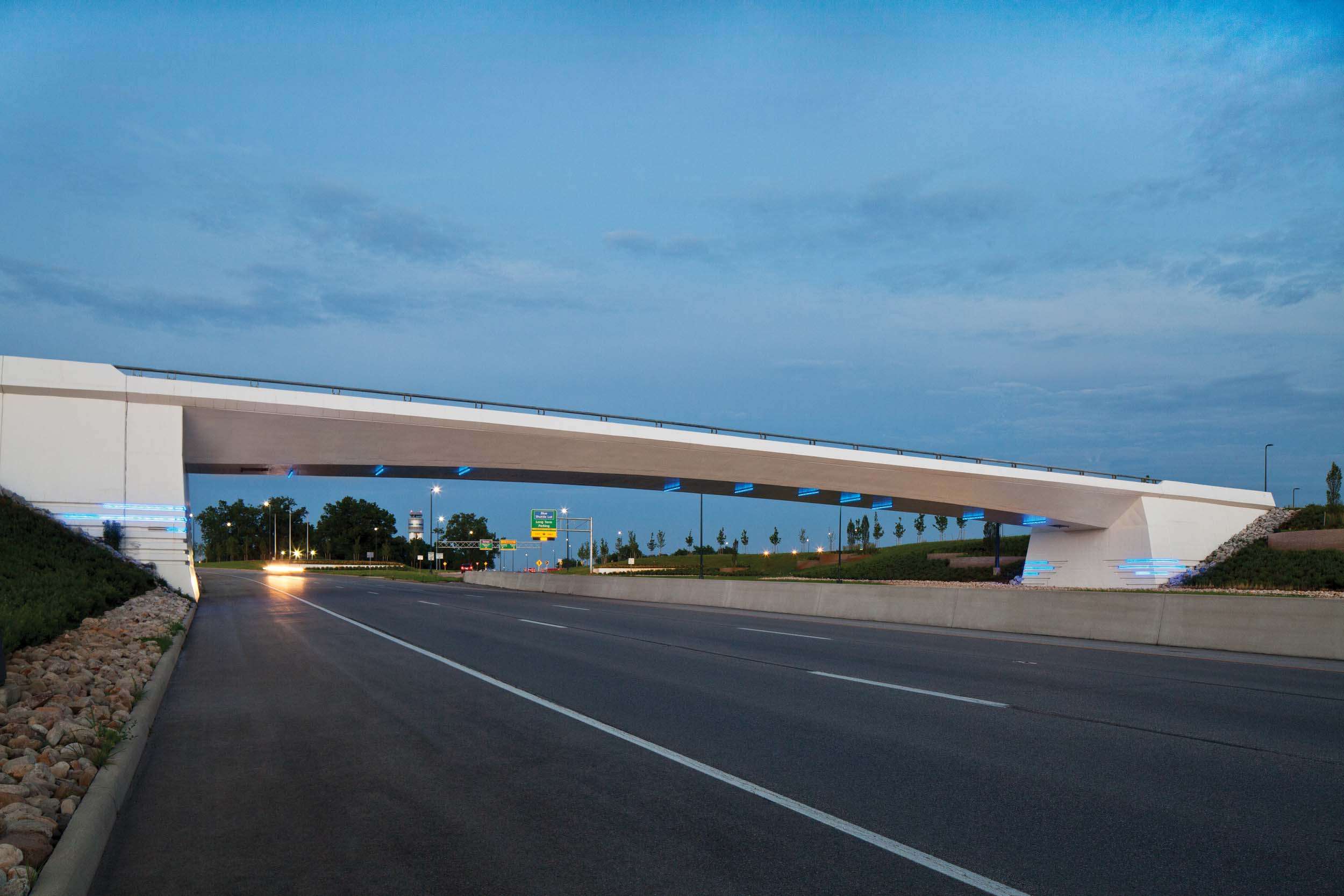Columbus Airport Bridges
Columbus, OH
- Bridge use: Vehicular
- Bridge type: Beam
- Bridge completion date: 2006 - 2015
- Bridge location: Midwest
- Bridge use: Vehicular
- Bridge type: Beam
- Bridge completion date: 2006 - 2015
- Bridge location: Midwest

Conceptual, preliminary, and final design
The John Glenn Columbus International Airport in Columbus, Ohio, needed a crossover taxiway so that aircraft could travel from the terminal building to the outer runways. The bridge is designed to carry a 747-400 aircraft weighing 894,900 pounds. A post-tensioned cast-in-place concrete structural system with integral abutments was selected. A hydronic deicing system consisting of tubes containing glycol from a pump and heater was embedded into the deck to keep it from icing during Ohio winters. Two additional narrower service bridges were also built following the same architectural language. A system of striking blue linear lights was integrated into the underside of the bridge and inclined abutments. The clear, elegant spans create a gateway into the airport with understated architecture and visual consistency.
- Client: Columbus Regional Airport Authority Columbus, OH
- Services: Aesthetic lighting design, Conceptual, preliminary, and final design
The John Glenn Columbus International Airport in Columbus, Ohio, needed a crossover taxiway so that aircraft could travel from the terminal building to the outer runways. The bridge is designed to carry a 747-400 aircraft weighing 894,900 pounds. A post-tensioned cast-in-place concrete structural system with integral abutments was selected. A hydronic deicing system consisting of tubes containing glycol from a pump and heater was embedded into the deck to keep it from icing during Ohio winters. Two additional narrower service bridges were also built following the same architectural language. A system of striking blue linear lights was integrated into the underside of the bridge and inclined abutments. The clear, elegant spans create a gateway into the airport with understated architecture and visual consistency.